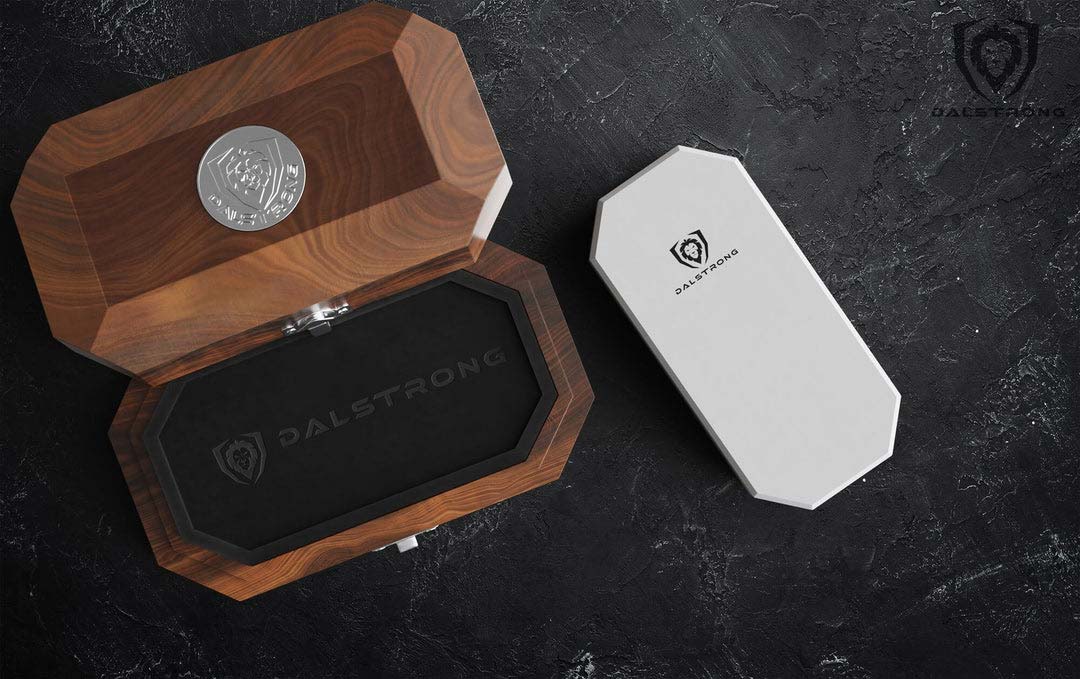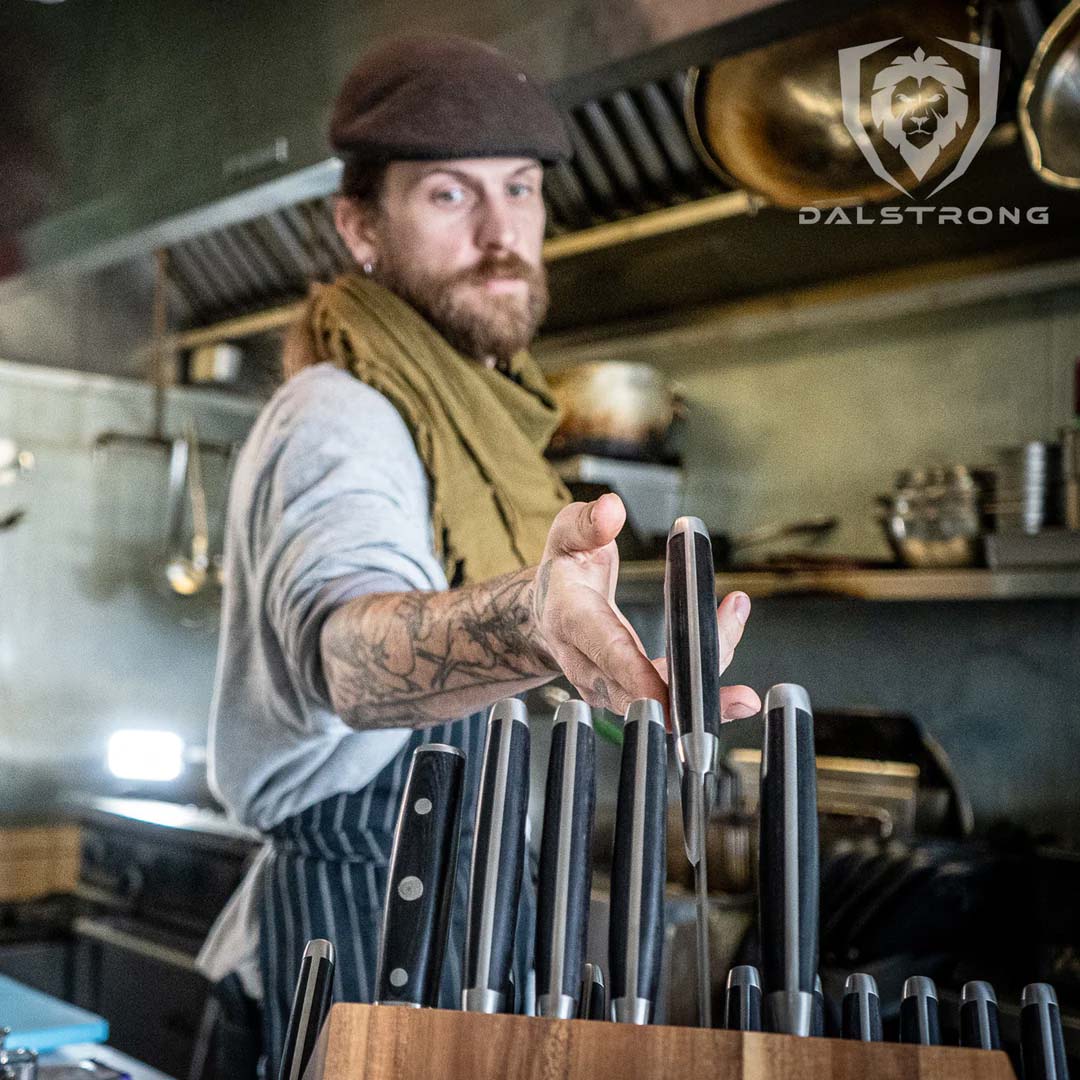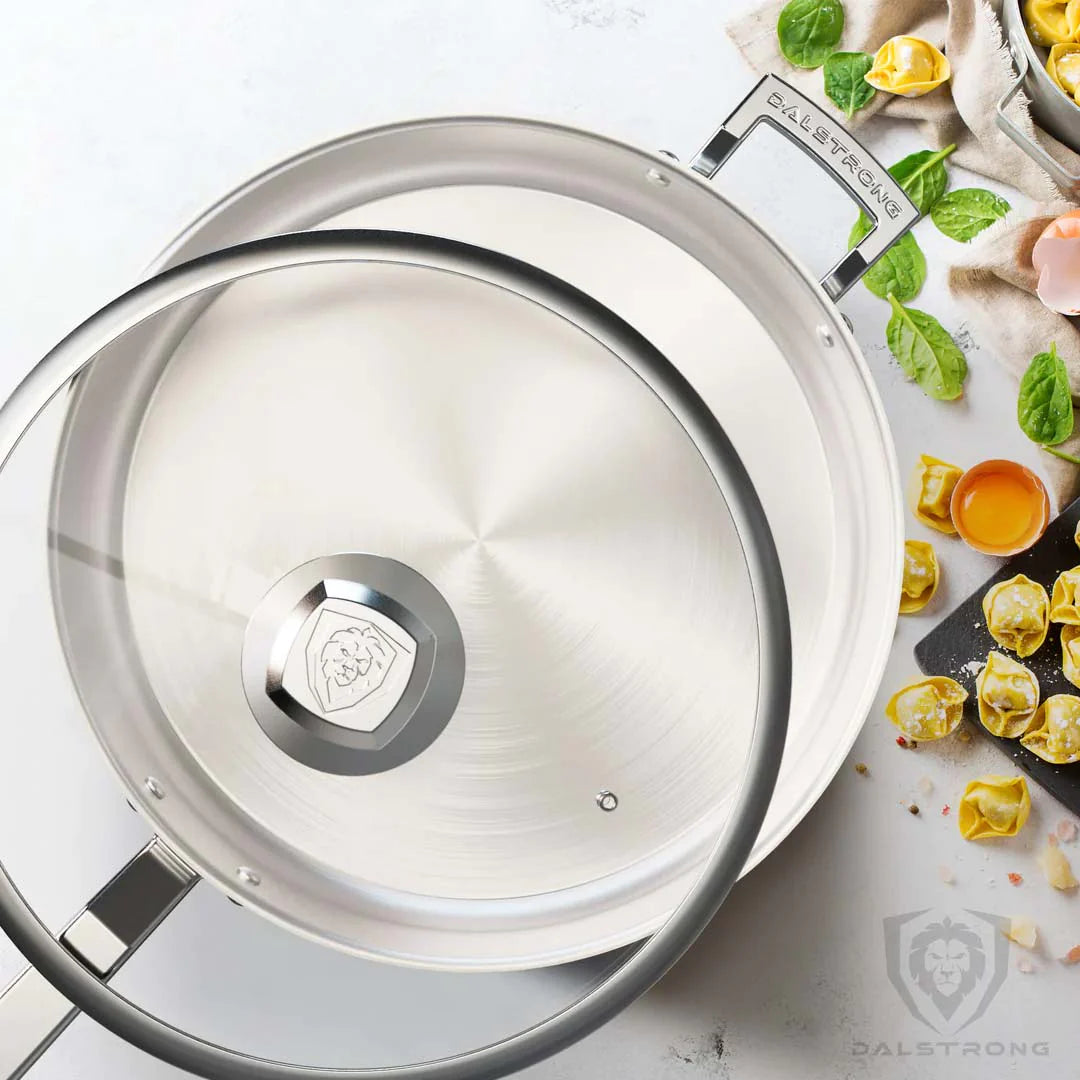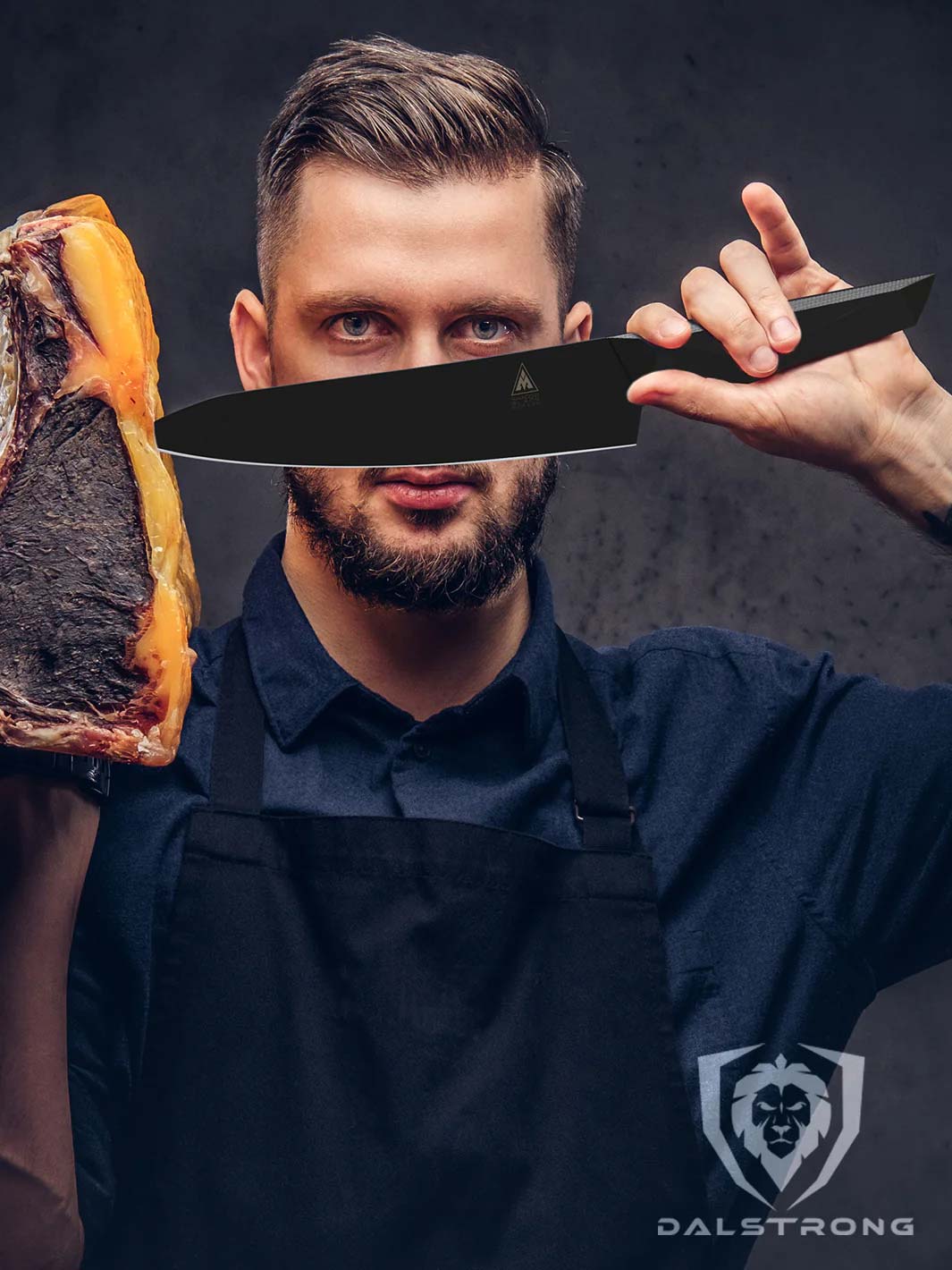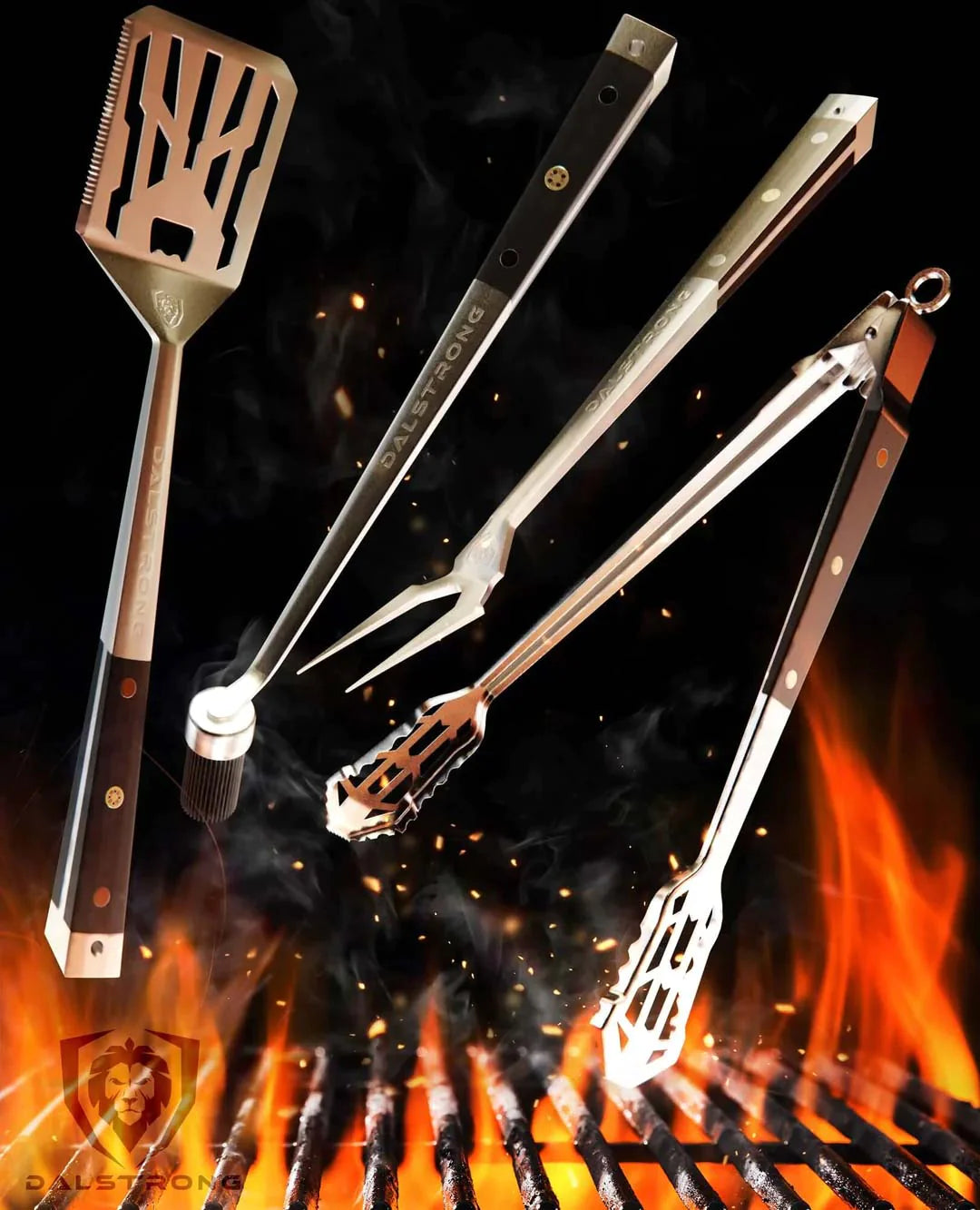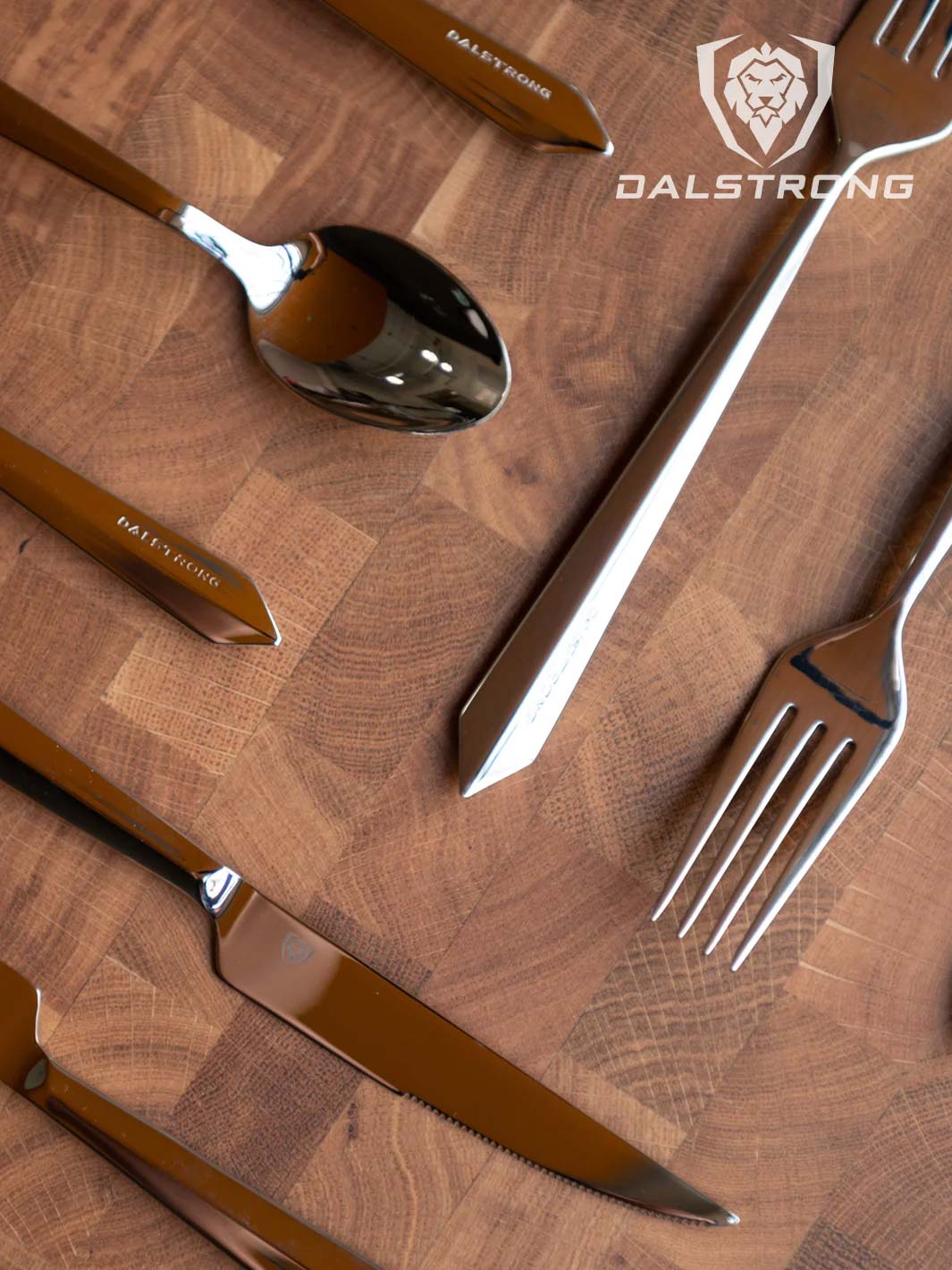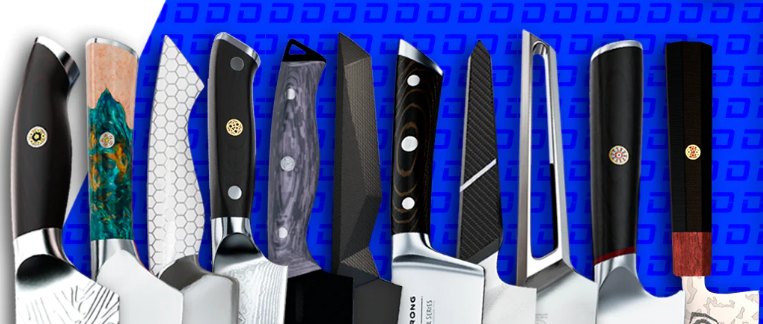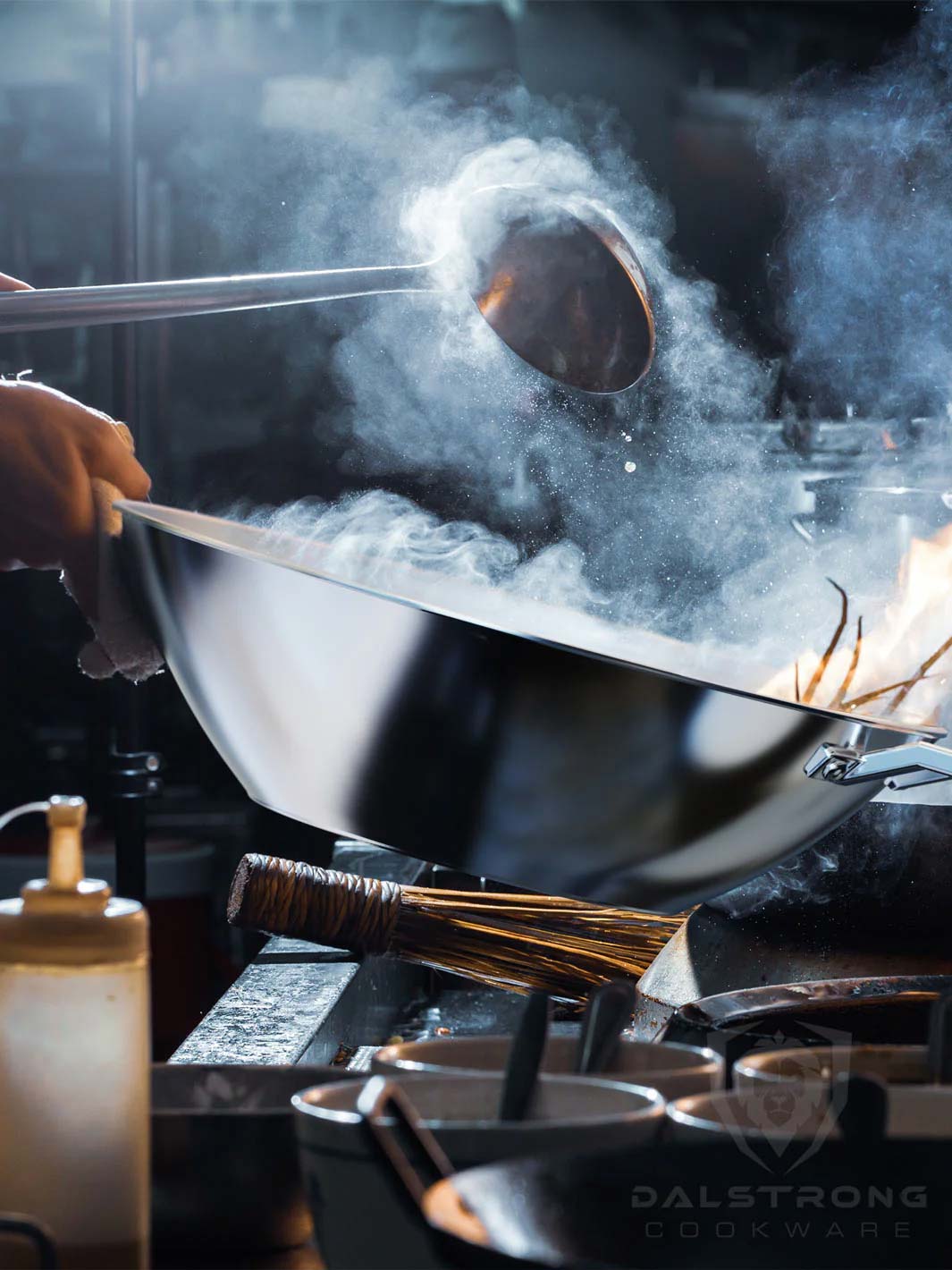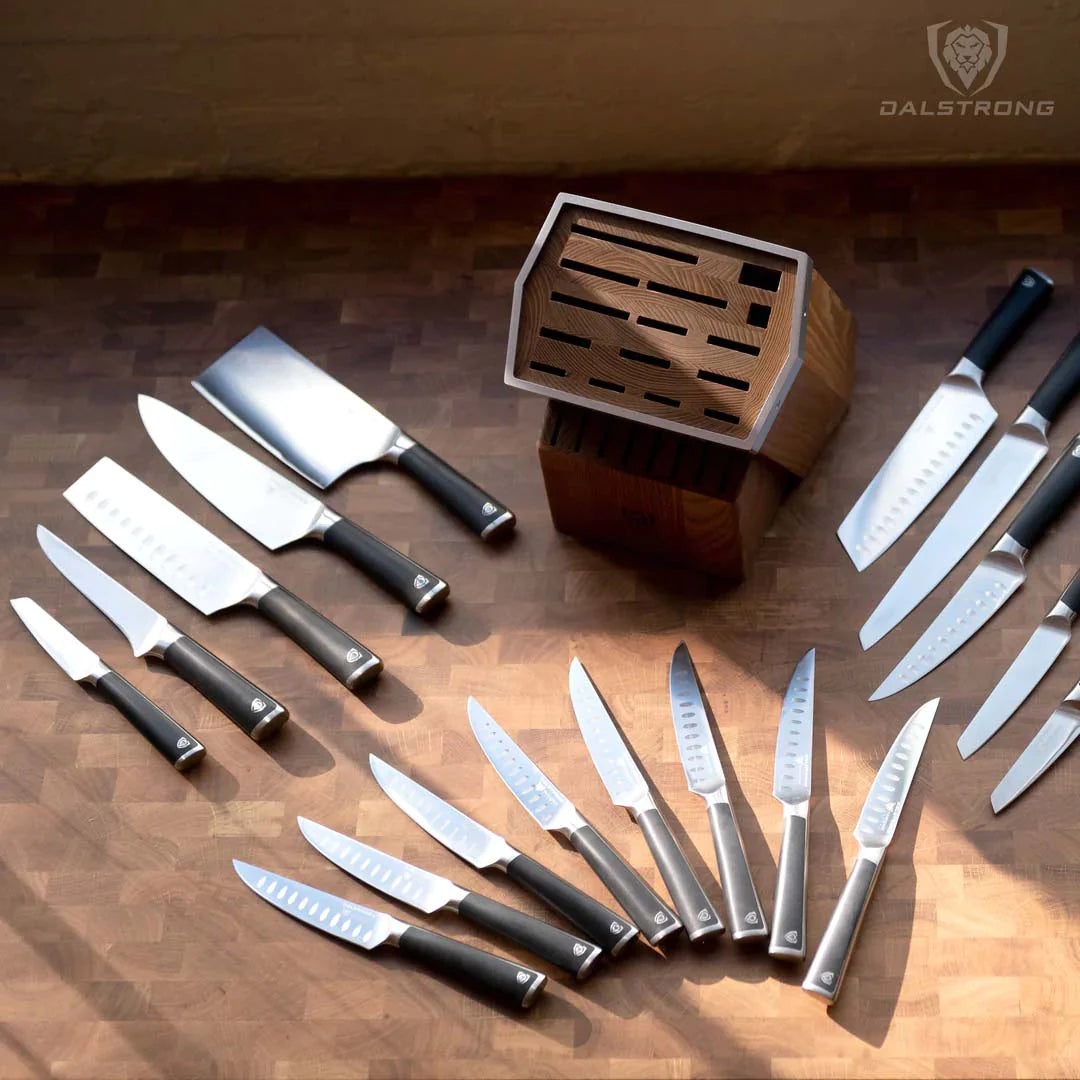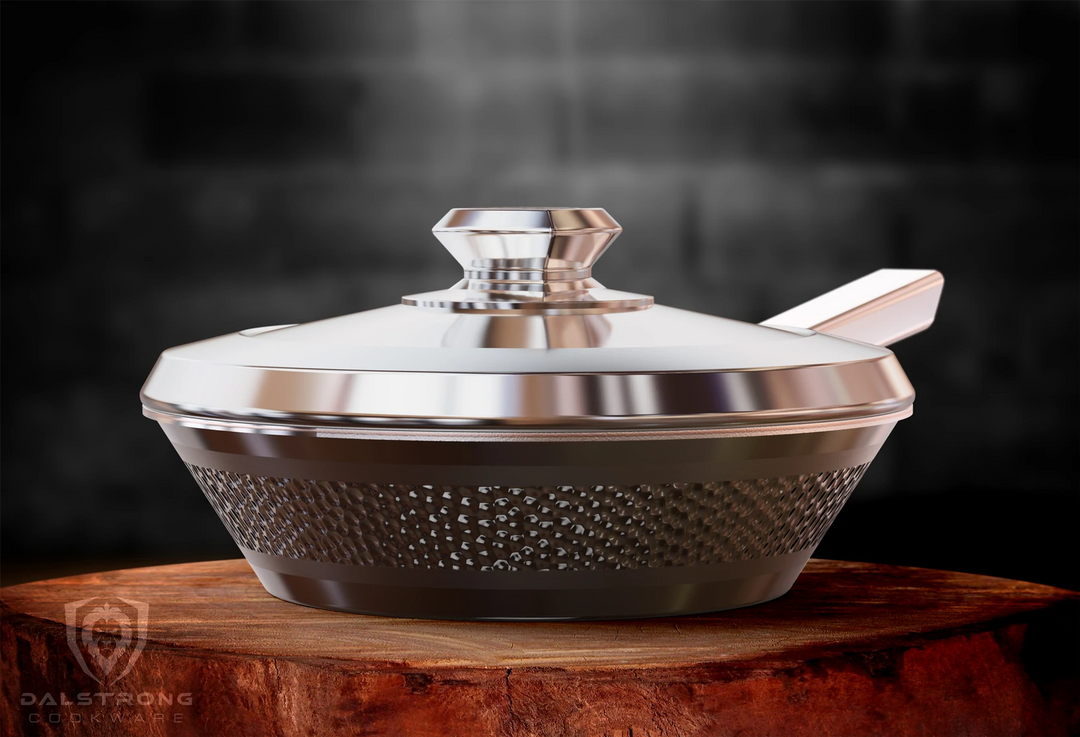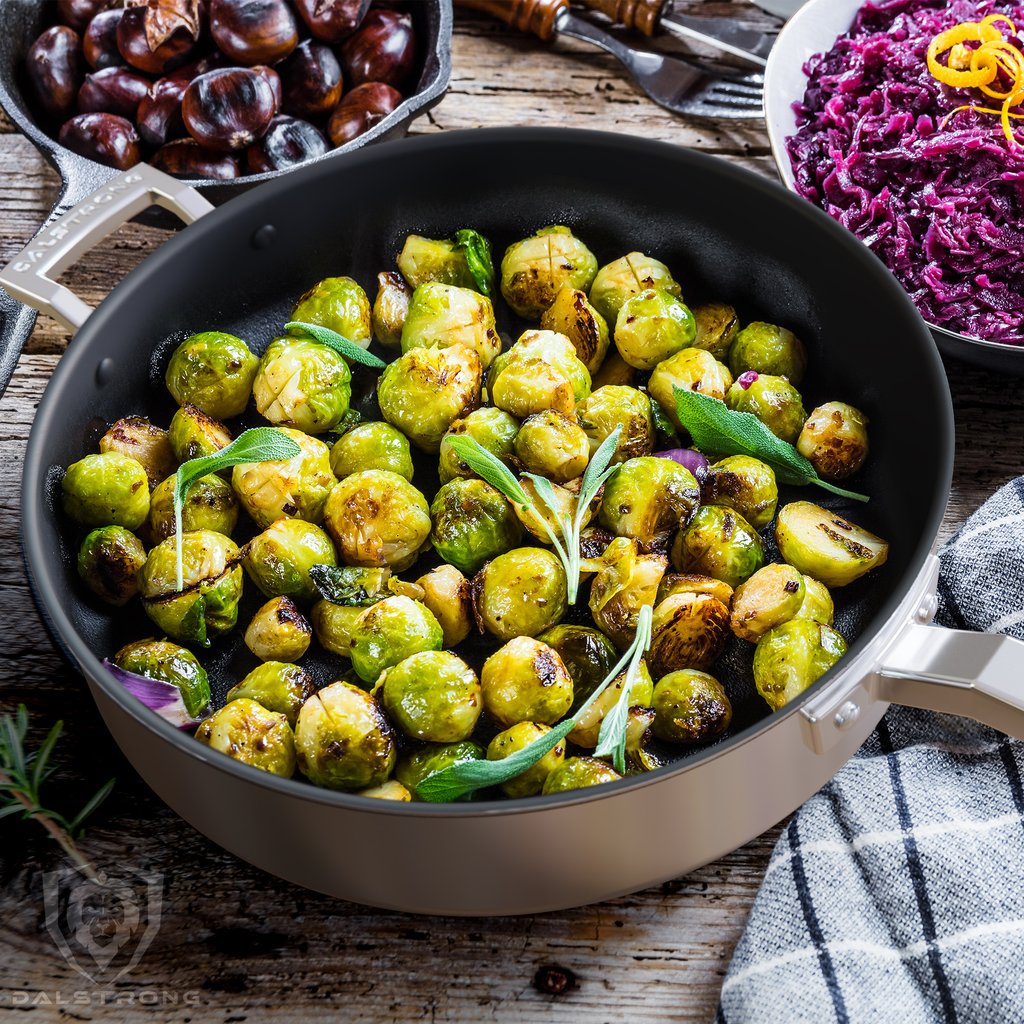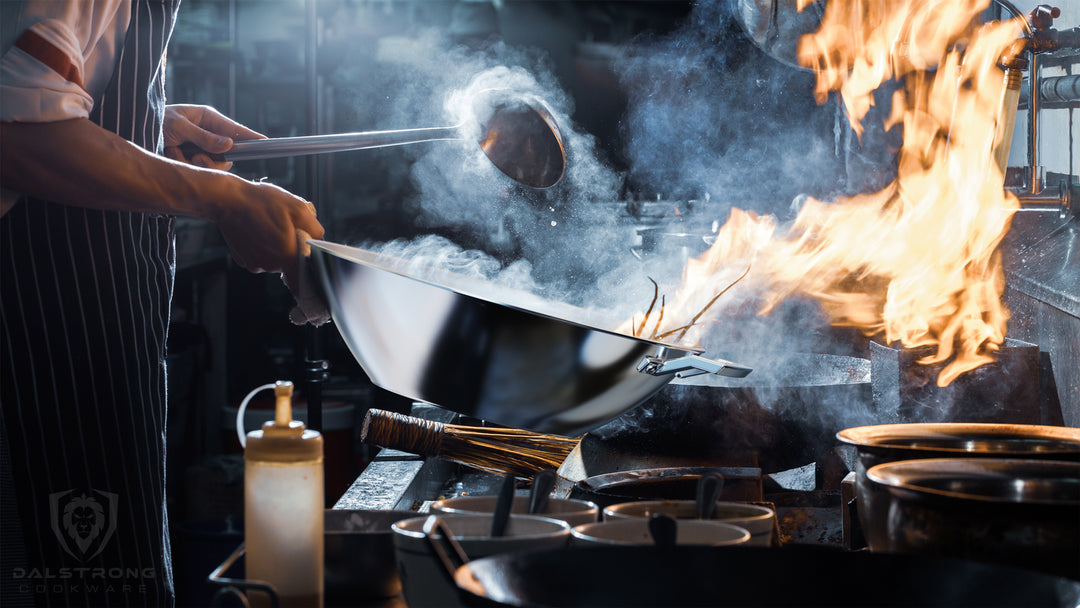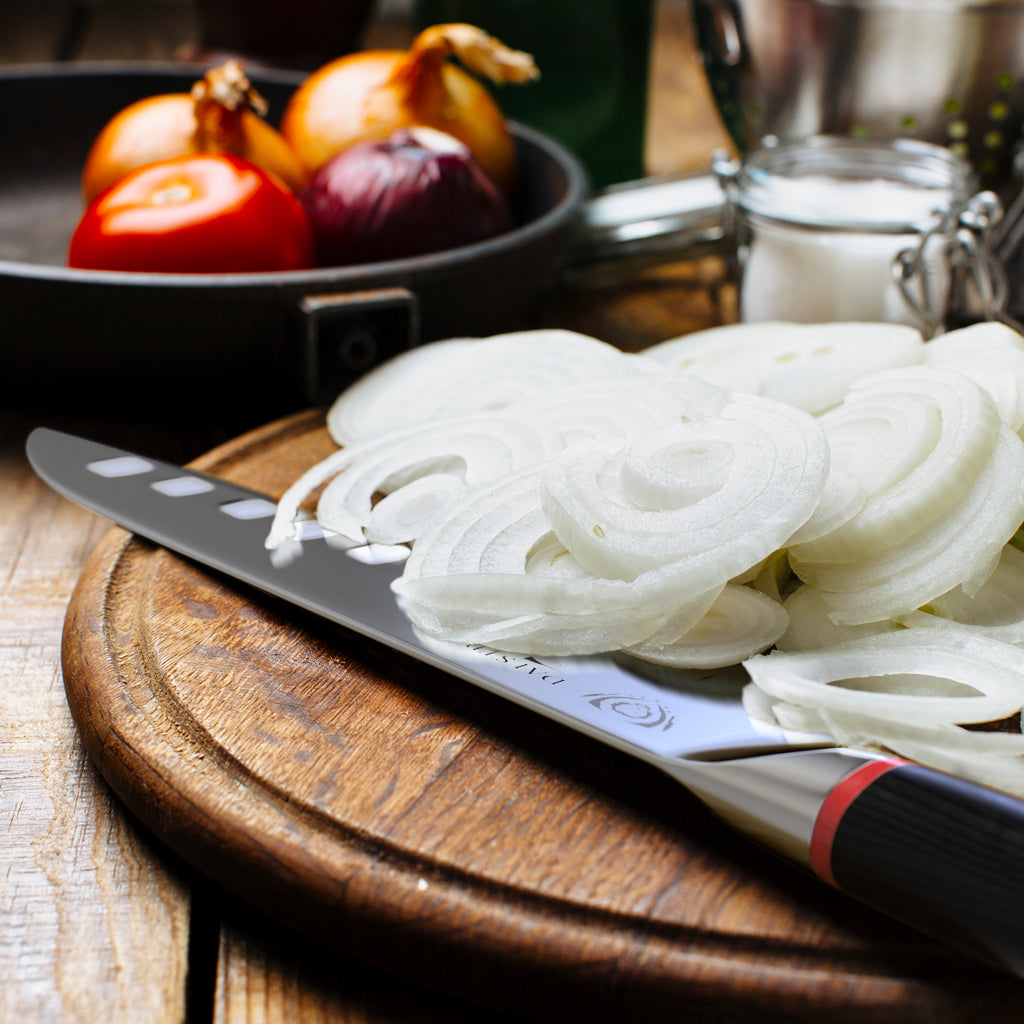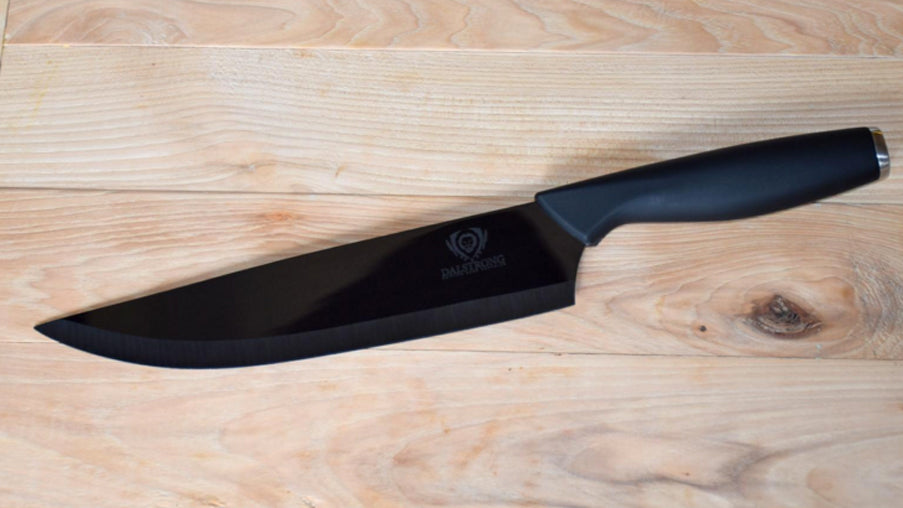Spatula: The Weapon Every Kitchen Needs
 Professional Slotted Stainless Steel Fish Spatula 7.5"
Professional Slotted Stainless Steel Fish Spatula 7.5"
Spatulas are some of the most loved and used tools in any kitchen. However, for the longest time, I had heard of the conflict surrounding the term spatula. To some people, spatulas are wide-based spoons with flat surfaces used to flip eggs and burgers. On the other hand, to some, they are thin metal blades used for smearing yummy icing on cakes. So what is it really?
1. What Is A Spatula?
 Professional Slotted Fish Spatula 7.5"
Professional Slotted Fish Spatula 7.5"
The origin of the word ‘spatula’ goes way back to ancient Greek and Latin. Linguists agree that the root of the word comes from variations on the Greek word ‘spathe’. In its original context. Spathe means a broad blade, like the ones found on a sword. This word eventually found its place in the Latin vocabulary as the word ‘spatha’. This term was used to refer to a specific variety of long swords. However, today the word describes any kitchen utensil with a long handle and a thin, flexible blade.
2. Types of Spatulas
 Professional Slotted Fish Spatula 7.5"
Professional Slotted Fish Spatula 7.5"
Spatulas are broadly divided into 3 categories: turners, spreaders, and scrapers.
Turners (aka Flippers)
This type of spatula consists of a long handle and a wide, thin surface that is usually shaped like a trapezoid. It may be a slotted kitchen spatula or a solid one, and the blade is almost the size of a human hand. The tip of the stainless steel turner is often tapered to make it easy to slide under foods. Most slotted turners are made of metal like steel or aluminum, which makes them strong, durable, and easy to clean.
You can also find a spatula turner made of other materials like plastic, nylon, or silicone. A silicone turner is gentle on nonstick pans and won’t leave scratches. These materials are also heat resistant but you shouldn’t let them sit in the pan or you might land up with a melted spatula.
You can also go for a bamboo spatula as they don’t transfer heat, don’t scratch your pans, they don’t react to acidic foods and they never leech chemicals or weird smells into your food. However, you must wash them right away and never leave them sitting in water.
Spreaders
These long and narrow spatulas resemble swords. Too dull to be of any use in a battle, the long and flexible blade with a rounded head makes it a great tool for your culinary adventures. While most spreader-style spatulas are made of metals like stainless steel, you can also find these in plastic and rubber models.
These are 2 main types of spreaders- offset and flat. Offset spreaders have a bend in the handle’s neck that allows you to cover a large flat surface without getting your hand in the product. An extra-flexible rubber spatula is good for soft and fluffy icing like buttercream. Flat or straight spreaders are usually shorter and round, are often found in delis, and are excellent cheese spreaders. They're are also great for getting icing on shorter rounded sides of cakes.
Scrapers
These are slightly tricky to describe but very to recognize. Rubber-tipped spatulas have a rectangular head with at least one rounded edge poised on the end of a straight handle. They come in different widths and lengths and can be found in a rainbow of bright colors that make them seem more fun than other utensils.
These spatulas are mostly made of rubber. Silicone spatula sets are also a popular choice as they are resistant to heat and can be used for scraping hot ingredients. The slender handles of this spatula are super simple and may be made of materials like wood, rubber, or plastic.
3. Uses of Spatula In Your Kitchen
 Spatula Knife Hybrid Utensil 8" Gladiator Series | NSF Certified | Dalstrong
Spatula Knife Hybrid Utensil 8" Gladiator Series | NSF Certified | Dalstrong
Different spatulas play different roles in your kitchen. Let’s take a look at some of those uses:
Turners/Flippers:
As the name implies, these types of metal spatulas are used to turn or flip foods like grilled cheese, fried eggs, burgers, and chopped veggies. Anyone that’s into grilling will have a favorite grill spatula in their arsenal. The stainless steel turner can be thicker or thinner, more or less flexible and they may have a soft grip or an extra-long handle. You might even find spatulas with serrated edges for convenient in-pan cutting. While each of them is designed for a specific purpose, more often than not they can all be used in place of one another. You probably don’t need so many flippers in your kitchen, so if you’re going to invest in just one, I suggest you look for a medium-sized, sturdy, slotted spatula with a soft-grip handle.
Spreaders:
Also known as icing spatulas, they are best used for spreading soft toppings like cake icing, cheese spreads, and sandwich condiments. The rounded end of the spatula is great for scooping up creamy condiments and the flexible blade makes it easy to spread toppings without ripping the bread or cake base. This kind of tool is a must-have in any baker of bagel smear lover’s kitchen arsenal.
Another creative way to use this spatula is to use it for art. Artists are familiar with this type of spatula as they work well as palette knives. It is used for mixing colors and even applying paint and creating texture on the canvas. Of course, you wouldn't want to use the same spatula for art that you use in the kitchen, due to potential food contamination.
Scrapers:
You would want to avoid using rubber spatulas on stove tops because they may melt. It is best for stirring, folding, and scraping cold, wet ingredients in a mixing bowl. No tool does a better job of cleaning sticky dough from a flat surface. Anyone who works with dough often should have a couple of scrapers on hand.
In my opinion, you should keep 2 scrapers so you can use one to scrape the other. They are fairly inexpensive and very easy to find. This type of spatula is also used as an omelet spatula.
4. Choosing The Right Spatula
 Spatula Knife Hybrid Utensil 8" Gladiator Series | NSF Certified | Dalstrong
Spatula Knife Hybrid Utensil 8" Gladiator Series | NSF Certified | Dalstrong
Material:
Be mindful of the material you choose for your spatula, especially if you’re choosing spatulas for nonstick cookware. Silicone and rubber each have their pros and cons. If you want more heat resistance, you must go for a silicone spatula. If you only use it for cold ingredients, go for a rubber spatula. If you are looking for something to go with your nonstick cookware, you should pick a silicone spatula that does not scratch the surface of nonstick pans. You can also find a silicone spatula with a wood handle.
If you want to go for a more eco-friendly option, you can also go for wood or bamboo spatulas. While they are long-lasting, they require care. The porous material of the spatula may also hold bacteria or food particles that could cause health issues in the long run. Plastic spatulas are also an option but I would not choose them as they may leech chemicals into the food and have a shorter lifespan.
Handle:
Be sure to choose a spatula with a handle that suits your needs. Wood is heat resistant but prone to splitting over time, whereas plastic is easy to clean but most likely to melt if exposed to high heat. Spatulas with a silicone handle work best but these should also not be left in pots on high heat for long as it could result in melting.
Cost:
Unless you are looking for the highest quality brands, you should be able to find a variety of spatulas that suit your needs and budget. While prices may vary widely, most stores have spatulas at prices that will not break the bank. Make sure you check all the features of the spatula before you buy it because otherwise, you’ll just land up paying double for the same item in the long run. Maintenance:
You must go for spatulas that are easy to clean and pick a material that can stand both extreme heat and cold. While most silicone spatulas are dishwasher safe, you have to be a little careful when it comes to plastic or wood spatulas as they can melt under extreme heat or warp and split if left in water for too long.
5. How To Maintain Your Spatula
Professional Slotted Fish Spatula 7.5”- Dalstrong
Spatulas are not very demanding tools. However, some materials do call for a little extra care.
- I recommend you handwash your spatula with warm/hot water and some dish soap.
- A stainless steel spatula can take repeated machine washing, but abrasive materials in some dishwasher detergents will dull the surface of the material.
-
Always dry the spatula when not in use. If a wooden spatula is left in water or wet it can ruin the spatula and cause the build-up of bacteria.
6. Recommended Spatulas For You
1. Professional Slotted Fish Spatula 7.5”- Dalstrong
This spatula is crafted using a single piece of premium, anti-corrosion stainless steel and equipped with a thick resin handle that is engineered for superior hand control, grip, and comfort. Learn more about fish spatulas from the link above, or from this article "Do you really need a fish spatula?"
Pros:
- It is constructed with a precisely angled front edge and a thin, almost sharp lip that is great for navigating crowded pans and sliding under delicate foods securely.
- The spatula is lightweight which gives it a good grip and makes it very easy for you to work for long hours with it.
- It is a multi-purpose tool that can be used to flip and remove delicate fillets of fish, flip pancakes, bake cookies, grill thick steaks, transfer cookies, break up ground meat, flip cheese sandwiches and burgers and so much more.
Cons:
- If you are someone who grills often, I suggest you invest in the entire grill kit instead of buying individual items as that could be a cost saver.
- If you need something sharper to cut and separate food while you cook it, you can do it with the spatula knife that I’ve talked about below.
- If you use nonstick cookware, silicone spatulas for nonstick cookware are recommended.
2. Spatula Knife Hybrid Utensil 8” - Dalstrong
This tool is a gamechanger! Here’s an ultra-versatile, innovative knife-spatula hybrid that is crafted to help you with your culinary challenges. It is designed to minimize mess and enhance efficiency.
Pros:
- Not only is this wide blade spatula knife perfect for carving through meats, veggies, and cakes, but it will also help you flip burgers, fry eggs, sauté onions, mince meat, slice hot dogs, and more.
- The tall blade of this knife allows for excellent knuckle clearance to assist with food prep and chopping activities.
- The handle of this tool is highly impervious to heat, cold, and moisture which means that it will work by your side no matter what the task is.
Cons:
- If you are new to the kitchen, using this tool can be a little intimidating. In that case, you can get a spatula and a knife separately to assist you with cooking.
- If you are looking for a longer knife blade to carve larger chunks of meat, you can take a look at some of the longer carving knives available.
3. BBQ Pitmaster & Meat Knife 6.5", Dalstrong
While not actually a spatula, this incredibly unique knife features a forked tip to help you move food between the hot grill and your plate.
Pros:
- This option combines the slicing power of a knife with the ability to skewer and move food without touching it.
- The killer look of this knife and the built-in bottle opener on the spine are added bonus features, sure to make good conversation starters around the grill this summer.
Cons:
- While the forked tip is a convenient way to move some foods, this tool is not designed for sliding under items and flipping them, so some users might need a more traditional spatula.
- This is a very bold style of knife that may not be to everyone's style.
4. Professional Black Titanium Coated 12" Tweezers - Dalstrong
These extra long professional chef's tweezers are a great tool for turning prawns and other small foods on the grill or stovetop, as well as for elegant plating arrangements.
Pros:
- Get ultra-precise when plating garnishes and other finishing details.
- These tweezers let you get a firm grasp when turning small, potentially slippery foods. You can use them to plate everything from prawns to garnishes to fish eggs! They also make a great mixing tool for egg drop soup and similar items.
- The length means you can turn foods on the grill with dexterity without getting too close to the flames.
Cons:
- Like the pitmaster knife, the tweezers can't really get under items for a traditional "flipping" motion. Pancake lovers will want a more standard spatula shape.
- The metal tips can cause scratches on nonstick cookware surfaces if not used properly.
5. Scalloped Silicone-tipped Food Tongs - Dalstrong
Need an extra hand in the kitchen? These 12" long silicone-tipped tongs are the perfect way to protect your hands while flipping, turning, or adjusting food on the grill or in the pan.
Pros:
- The silicone tip means you can use these on nonstick cookware.
- A slick little locking mechanism keeps these tongs closed and compact when not in use, and you can open them with just one hand too.
- Like the tweezers, the length means you can turn foods on the grill with dexterity without getting too close to the flames.
Cons:
- At 12", these may be a bit too long for some users, in which case I recommend the 9" silicone-tipped tongs.
- If you do more grilling than cooking in the kitchen, you may want tongs that are steel all the way down like these ones for even greater strength and durability.
7. Frequently Asked Questions
What is a spatula used for?
A cooking spatula is a tool used for blending foods or removing them from cookware or other hot surfaces. Spatulas can also be used for stirring, plating, and other culinary purposes.
What is the difference between a turner and a spatula?
A stainless steel turner or silicone turner is a type of spatula designed for one purpose- to turn food over, while the word spatula can refer to a kitchen tool that chefs use for other purposes like cramping and spreading as well.
What are the types of spatula?
Spatulas fall into three main categories- Flippers, spreaders, and scrapers.








































































































































































































